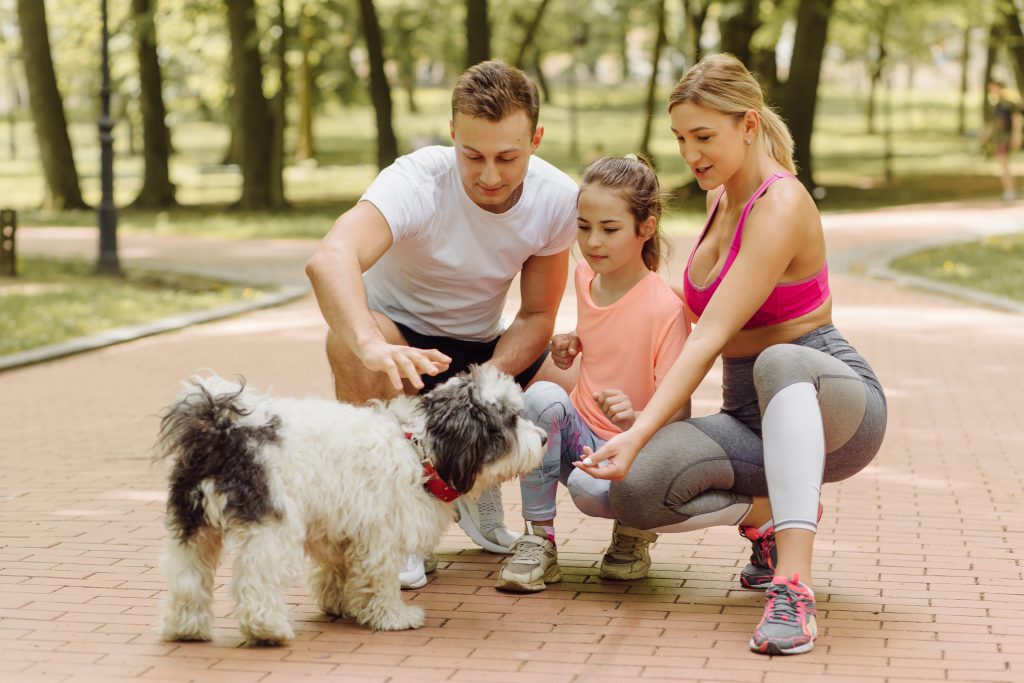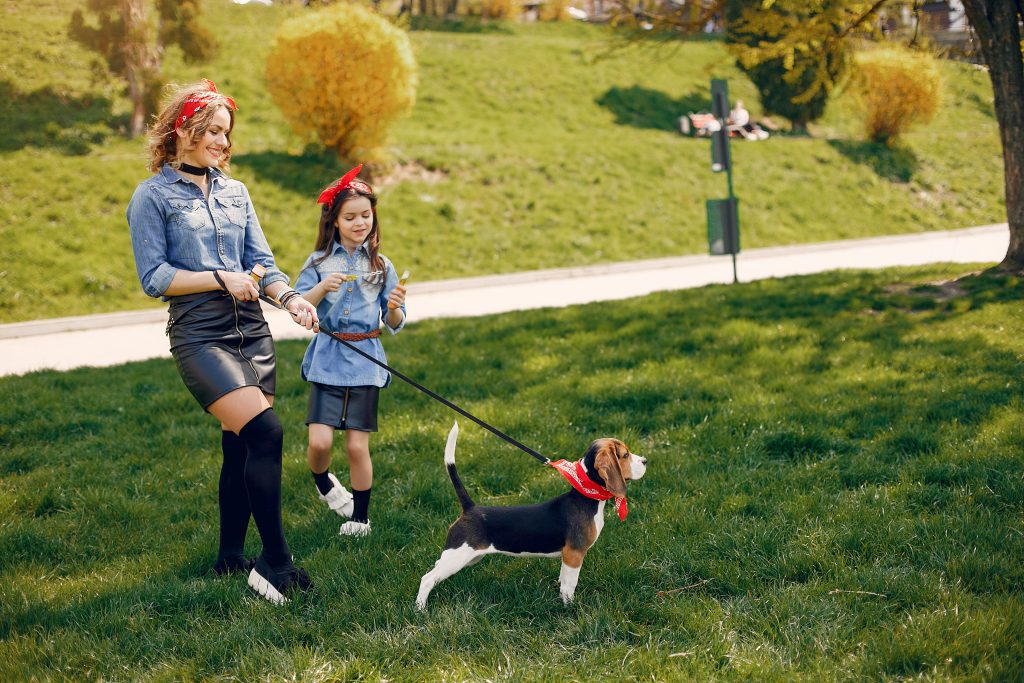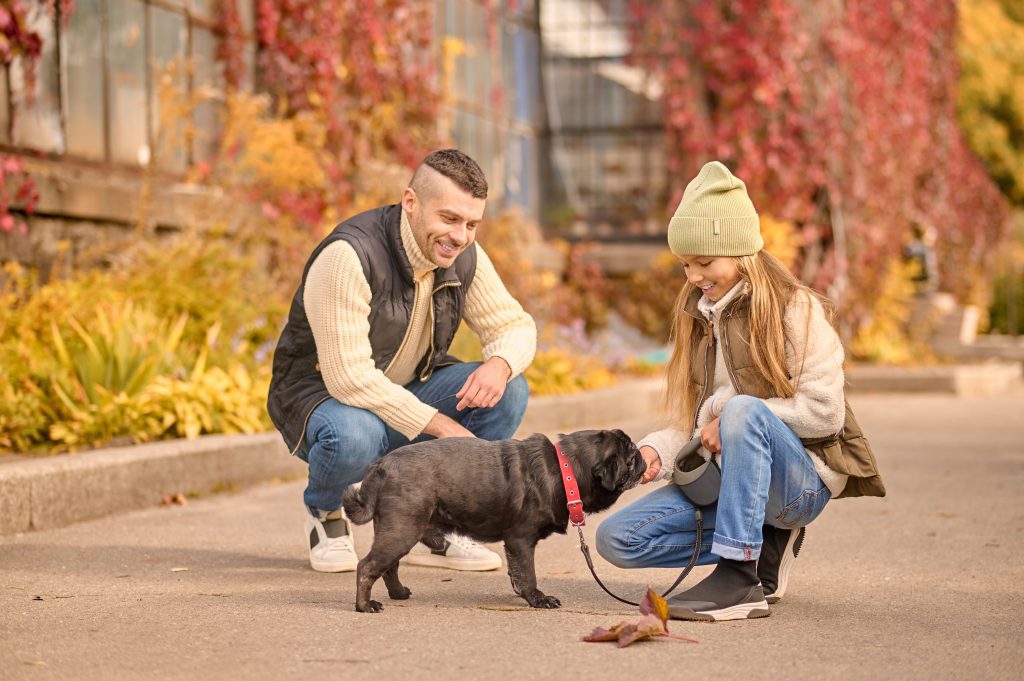
As dog trainers, we often face a challenge that goes beyond our work with dogs: managing the human element. This is where consistency for successful dog training comes into play.
While we can create great training plans, our efforts can be undone when families aren’t consistent in following through. Dogs learn best with consistency and clear communication. When families vary their approach to training, it can lead to setbacks.
This blog post explores how inconsistent family behavior affects dog learning and how to identify these common issues.
The Importance of Consistency for Successful Dog Training and How Inconsistent Family Behavior Impacts Dog Learning
Inconsistent Cues
Dogs are great at learning specific cues, but they need consistency in their training. If family members use different words for the same command (like “Down” vs. “Lie down”), the dog might get confused and struggle to perform the behavior reliably.
Here are other inconsistencies when it comes to issuing commands:
- Using different words for the same command
- Varying hand signals or body language
- Failing to pair verbal and non-verbal cues together
I work with deaf dogs. These dogs rely heavily on body language and hand signals. When one family member uses one hand signal and the other uses a different hand signal, the dog often struggles to appropriately respond. This behavior is not limited to dogs with hearing issues. Any dog can struggle when the training is inconsistent.
Let’s pretend you have two bosses. One speaks to you in English and the other in French. If you are not fluent in both languages, you will struggle to understand one of those two bosses.
These inconsistencies can make dogs slower to respond or not respond at all.
Accidental Reinforcement of Unwanted Behaviors
Sometimes, families unknowingly reward behaviors we’re trying to change. For instance, if a dog sometimes gets attention for jumping and other times the behavior is ignored or corrected. This dog will likely keep jumping. The behavior may alter which family member they stop jumping on, but it does not correct the problem because jumping occasionally works.
Family members might unintentionally encourage bad habits by:
- Giving attention for nuisance behaviors (like petting a jumping dog)
- Sometimes allowing behaviors that are usually off-limits (like begging at the table)
- Verbally soothing anxious behaviors (like during thunderstorms)
I worked with a family who had a dog who jumped. For the first four years of life, the male owner had no problem with his giant dog jumping on people. Once his new wife was pregnant he wanted the dog to stop jumping. We worked for weeks on this issue with no success. Every opportunity the dog found to jump on the wife, he did.
Four weeks into training, we chatted after the lesson. The male owner asked if I wanted to see something cute and asked the dog to hug him. This massive dog stood up on his hind legs, placed his paws on the owner’s shoulders and they hugged. The man praised the dog and kissed the side of his head. In return, the dog ran his tongue all over the man’s face. It was a beautiful scene – just not when you’re the trainer who is working to stop jumping on people.
This inconsistent behavior on behalf of the male owner caused confusion for the dog. It prevented them from successfully ending the unwanted behavior.
Learned behaviors that aren’t consistently practiced or rewarded

This is especially problematic for commands like “come” or walking on a loose leash. If family members don’t consistently reinforce these behaviors, the dog will likely forget or ignore them.
Every day we meet people who only teach recall commands in the home. Some extend the practice session to the yard, but that is as far as generalization goes.
More problematic is the dog owner who fails to continue recall work throughout the dog’s life. Once the dog responds well to the command, they stop practicing. When an emergency situation arises in the future, they expect the dog to respond as well as they did during their last training session.
Likewise, when a puppy first learns to walk, the owner attaches a leash and proudly parades their puppy through the entire neighborhood. Meanwhile the poor puppy has no idea what is happening. In many cases, it is the first time the puppy is attached to a leash. The confused and frightened puppy sometimes refuses to move and is dragged. Another example is an excited puppy who drags the owner. In the second example, that puppy crisscrosses in front of owner on walks or pulls them in various directions, depending on what the puppy wants to see or smell. Which brings us to generalization…
Difficulty Generalizing Behaviors
In order for a dog to perform a behavior in different places or situations, they need consistent practice. If families don’t maintain training standards across various settings, dogs will struggle to behave well in new environments.
Irregular Marking Behavior and Providing Rewards
Effective training relies on well-timed marking and rewards. Most people are familiar with clicker training. Marker training is the same concept except trainers use their voice rather than the clicker. The most common verbal mark is “yes”.
When the timing of these marks are too early or too late they can negatively affect your training goals. Same situation for someone who completely omits the mark. It is important to mark the behavior the moment it happens.
I recently watched a video where the trainer bounced a tennis ball. Each time that ball hit the ground, viewers were told to click or say “yes”. This is a great technique to help people learn how to mark properly.
Here are other ways that families negatively affect training when providing rewards:
- Rewarding the dog (or overfeeding) throughout the day without having the dog work it
- Failing to raise the value of the reward during more advanced training sessions
- Rewarding some times but not others without a clear pattern during the learning process.
- Inconsistent marker words or failure to mark the behavior.
These actions can undo our efforts to change problematic behaviors.
Dachshund dogs are famous for providing a “fake sit”. This is because it is sometimes difficult to see when their bottom actually hits the floor. Many owners mark and reward before their dog’s bottom hits the ground. So the dog learns when cued to sit, a partial sit before the mark and reward is provided. I have seen this with other breeds too, but the Dachshund stuck out in my mind while writing this post because I spend the most time warning their owners about this behavior.
Equally important is the delivery of treats. When teaching a dog new commands, the treat comes after the click or verbal mark. (example: Cue dog to down. Dog drops into a proper down, mark immediately and then treat).
While you can switch from clicker training to marker training, your client must take the time to charge the updated mark.
Families often provide a treat to a dog even though the dog has not provided the behavior that was cued. I see this often when people cue their dog to sit. They reward the behavior even though the dog is still standing. Their response when I question their behavior is: “I wasn’t paying attention” or “He tried”.
Improperly providing treats to a dog is confusing for them. It makes wanted behaviors less reliable while enforcing unwanted behaviors..
Inconsistent Management of the Environment
When a dog’s surroundings and the rules governing them are unpredictable or constantly changing, it creates confusion and stress for the animal. Controlling the dog’s environment is crucial for successful training.
This inconsistency makes it difficult for dogs to understand what behaviors are expected of them.
A lack of environmental control leads to slower learning and potential regression in the training progress.
For example, when a dog is not housebroken and still chews on inappropriate items, it is crucial to limit that dog’s freedom in the home consistently.
Often dog owners will spend most of the day keeping a close eye on the dog and crating the dog in their absence. But later in the day when the kids are home, the family is busy with other tasks or a different family member manages the dog, the dog has unsupervised freedom around the home. This is when most of the housebreaking accidents and destruction happen.
This inconsistent behavior on behalf of the human owner, makes it difficult for the dog to learn that elimination in the house is not permitted. The dog also fails to learn that chewing on shoes, furniture, children toys, walls, etc. is not acceptable.
This lack of environmental consistency can result in increased anxiety, reduced confidence and a deterioration of the trust between the dog and its handlers. Ultimately, inconsistent management undermines the structure and predictability that dogs need to thrive and learn effectively.
When it comes to management, families tend to:
- Omit tools like crates or baby gates
- Not removing temptations (like food left on counters and shoes on the floor)
- Vary the dog’s daily routine
Failure to manage the environment can potentially lead to behavioral issues and a breakdown in the training process.
Varying Application of Training Methods
Dog training has evolved over time. Many dog owners get stuck on training their current dog the same way their childhood dog was trained. In most cases those training methods are outdated (and often cruel). The problem is that it worked when we were kids. So some family members want to use those same methods or they are being influenced by their parents to use outdated methods. Meantime other family members want to use current training methods to train the dog.
The inconsistency between training styles can negatively affect the training outcome and your relationship with the dog. It is important to teach clients that training has evolved. We need to toss outdated methods (such as pushing the dog’s nose in pee or poop accidents inside the home and using the crate as a punishment). Owners must use new and more effective training methods taught today.

Another issue we encounter is couples with one person following through when the dog doesn’t listen to commands and the other who feels badly for the dog. Rather than following through with the command, the second person makes excuses for the dog’s inability to respond.
This inconsistency can confuse the dog and slow down learning and teach your dog that listening is not important.. Teach your clients to avoid:
- Different levels of involvement in training (the entire family must work with the dog)
- Using different techniques across family members
- Not following through with training homework
Conclusion
As dog trainers, our success depends not just on our ability to train dogs, but also on our skill in guiding families.
By understanding how family consistency affects dog learning, identifying common disruptions and implementing strategies to promote alignment, we can significantly improve the effectiveness of our training programs.
Remember that each family is unique. By tailoring our approach to each situation and keeping communication open, we can navigate the complex dynamics of family-based dog training. Our goal is to create strong relationships between dogs and their families, built on clear communication and consistency for successful dog training.
Want to learn strategies to help families maintain consistency and achieve training success? Click here for those strategies.
